The classic New York City steakhouse formula has largely gone unchanged for decades: First course is from the raw bar. That’s followed by a wedge salad or maybe a bisque. And then the steak and sides (creamed spinach, baked potato) arrive. Dessert is probably crème brûlée.
Cote mixes things up by marrying an American steakhouse with Korean barbecue to create a one-of-a-kind experience.
A carnivore’s paradise
“In an American steakhouse, the beef quality is king,” owner Simon Kim tells CNN Travel.
“I thought that a Korean steakhouse should have the best of both worlds. We should put a grill on the table, but we should also get the best beef and have our own dry-aging room in-house with an awesome wine list. That way Korean barbecue-seeking people will have this elevated Korean barbecue experience through higher quality of beef, and American steakhouse lovers will be able to have this not-your-grandfather’s steakhouse experience.”
The entrance reveals a long, dark hallway that gives way to a modern, dimly-lit dining room with concrete floors, marble tops and gold-rimmed grills at each table. It’s a stark contrast to the old school steakhouses that have wooden panels adorning the walls and white cloth draped over every table.
Cote even has its own dry-aging room in the basement, which allows the chefs to control every step of the process and to ensure that every cut of beef is to the restaurant’s high standards.
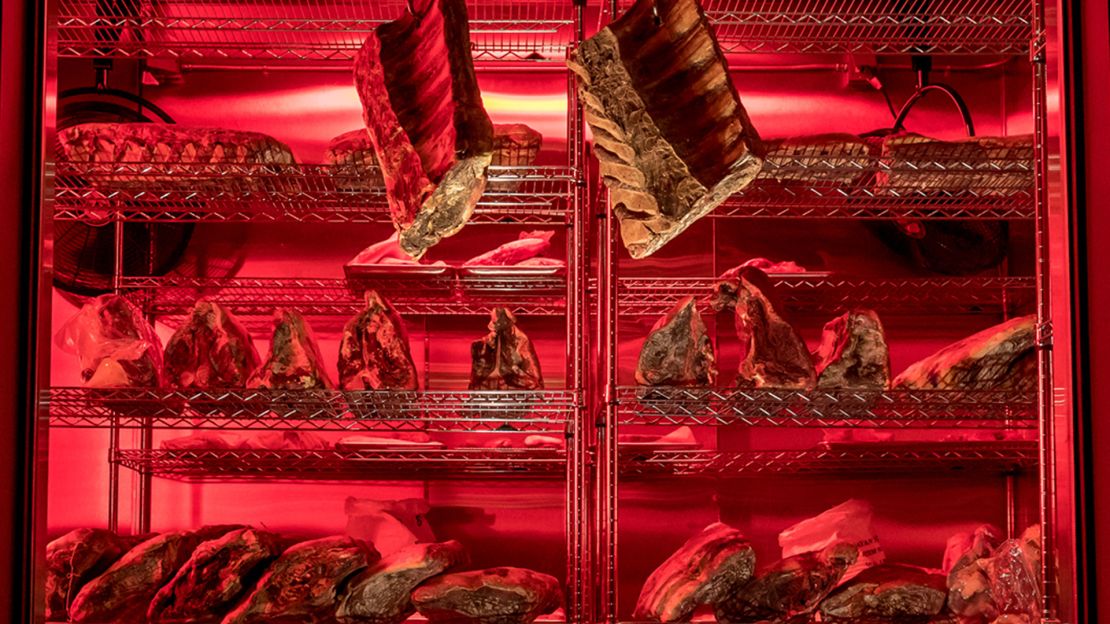
Korea comes to America
Unlike most steakhouses, which prepare everything in the kitchen, all the beef at Cote is served and expertly cooked tableside to add a bit of theatrical flair.
Tableside grills are a fixture at Korean barbecue restaurants where diners order from a wide array of mostly beef and pork, which are cooked by the server – unless you prefer to wield the tongs yourself – at the table for you.
Cote’s tableside grills are smokeless, so after you enjoy The Butcher’s Feast – arguably the best value on the menu at $54 – you don’t have to worry about smelling like a bonfire.
The Butcher’s Feast comes with four cuts from the menu’s selection of USDA Prime and American Wagyu beef along with banchan – side dishes typically served with meals in Korean culture – a scallion salad, red leaf lettuce, two types of Korean stew and an egg souffle.
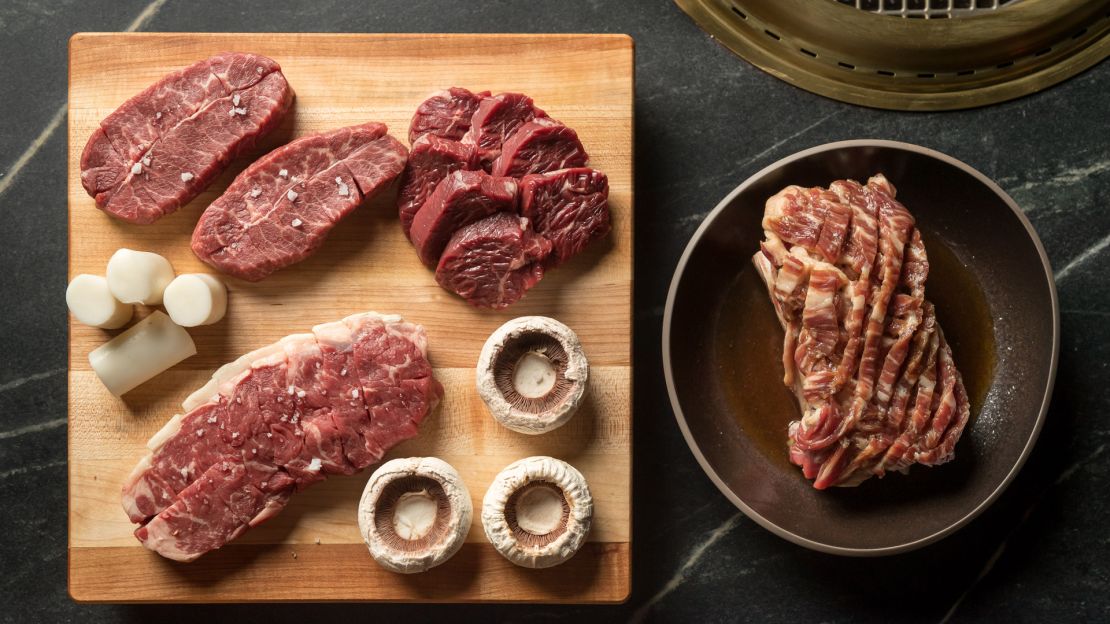
However, the steak omakase, which is currently offered twice a night and only by special reservation (Kim says they soon plan to put it on the main menu and expand the nightly offerings), is what makes Cote a truly destination-worthy experience.
Priced at $125, the steak omakase at Cote is a bargain compared to some of the outrageously expensive sushi omakase offered in NYC.
Omakase, translated from Japanese, means “I’ll leave it up to you.” It is commonly offered in sushi restaurants, where you put your faith in the chef to craft a meal for you one piece of sushi at a time. Each piece of sushi is considered a course, and courses can typically range anywhere from nine pieces all the way up to 20, depending on the restaurant and your budget.
While most steakhouses assault your palate (and waistline) with a huge serving of beef, Cote follows in the footsteps of sushi restaurants and offers a more refined and varied experience with its less-than-traditional omakase. Here, you get to taste a wide range of cuts, each with distinct flavors.
Although the meal once began with a slice of American Wagyu Cote steak that was hard seared and chilled before being topped with Maine uni and Osetra Caviar, Cote’s omakase now begins with an Argentinian pink shrimp.
As Wesley Sohn, manager at Cote, explains it, “We believe a more seafood-forward, refreshing first bite gives guests a better start to the steak omakase experience.”
An amuse bouche of boeuf
After the first bite is served, the star of the show is brought over to the table on a long wooden “boat.” The raw pieces of beef are presented in all their glistening, marbleized glory, with a server carefully explaining each of the cuts.
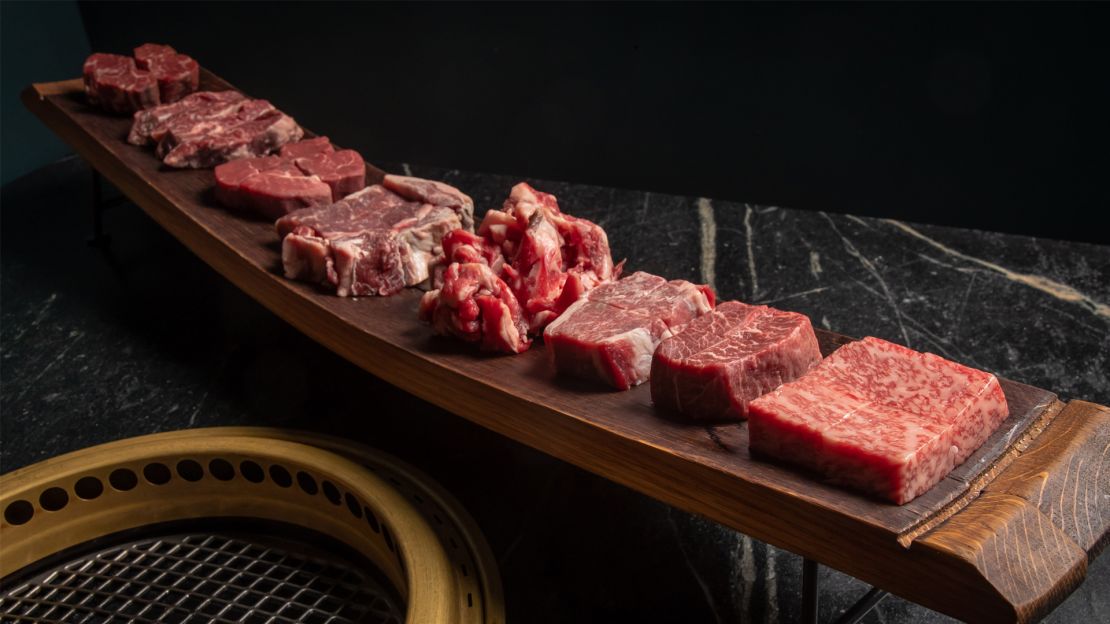
The steak omakase begins with what the restaurant call “fresh cuts” from its selection of USDA Prime beef: hanger steak, skirt steak and filet mignon. A white button mushroom is grilled alongside these cuts, and the juice that builds up inside the mushroom as it cooks acts as a palette cleanser before you’re served the next section of the meal.
The dinner goes on to explore Cote’s dry-aging program, which is where you may find some variety in the available offerings.
A typical night could bring a 45-day dry-aged ribeye, a 45-day dry-aged New York strip and finger meat – beef taken from the outskirts of the bone between the ribs.
The dry-aged section is rounded out with a cut from the reserve selection, which are extremely funky, potent cuts that have been dry-aged anywhere from 230 to 280 days.
“I see it almost as an amuse-bouche to whet the appetite,” Kim says of the cuts from the reserve selection. “It’s a very extreme tasting that I want our customers to have access to.”
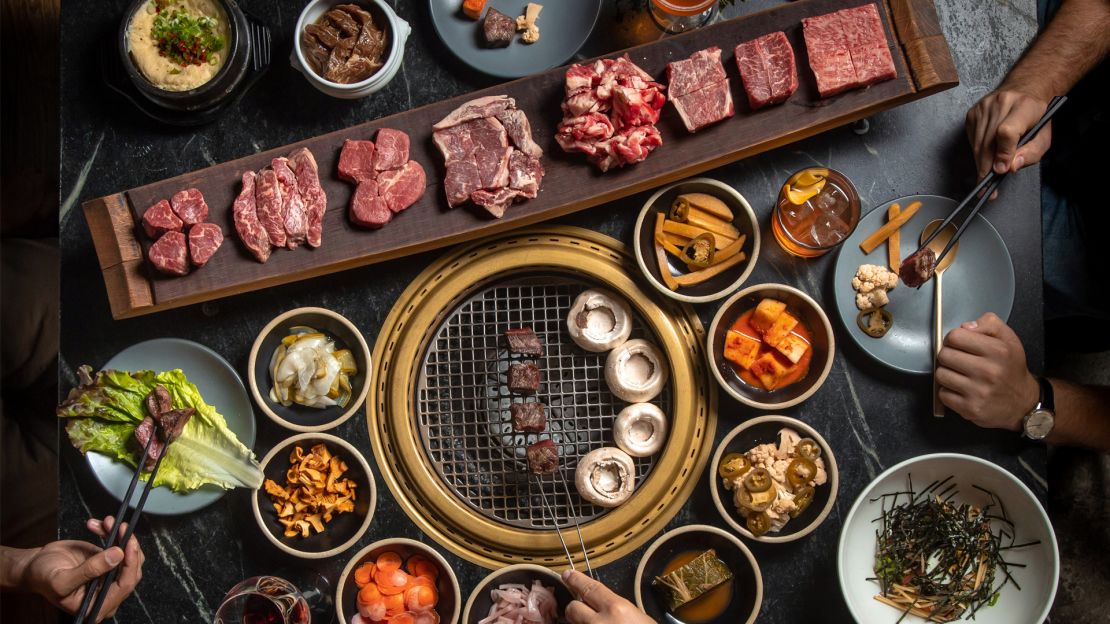
A full stomach
To wind things down, two different cuts of wagyu are showcased. First up is what they call Cote steak, which is the chuck flap tail from an American wagyu cow. This is followed up with A5 wagyu, which is straight from the Kagoshima region in Japan and is one of the most coveted cuts of beef in the world.
The final piece of this meat feast is a marinated short rib called galbi, which is commonly served at most Korean restaurants. It is served with bibim somyun, a refreshing cold noodle dish that is comprised of angel hair noodles, apples, iceberg lettuce and covered in a gochujang (Korean red chili paste) vinaigrette.
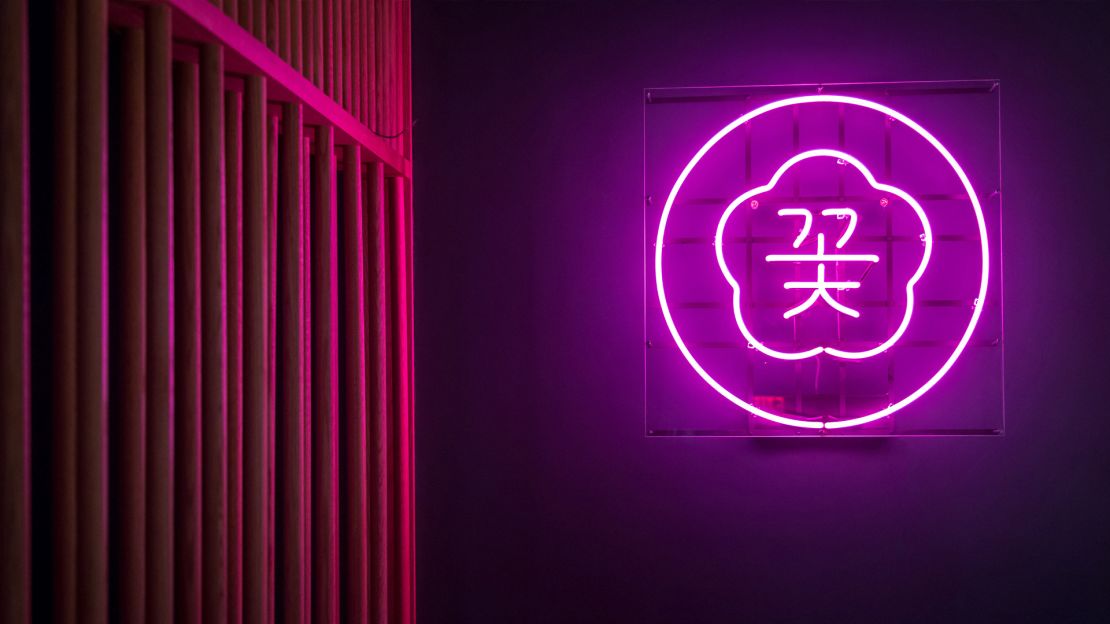
The meal ends with center-cut watermelon and a vanilla soft serve drizzled with soy caramel. It comes with a small bottle of Underberg on the side, which is a digestif and pairs with the soft serve.
It’s the boozy equivalent of an affogato and does wonders at preventing a meat hangover.
Cote, 16 West 22nd St., New York, NY 10010, (212) 401-7986





















